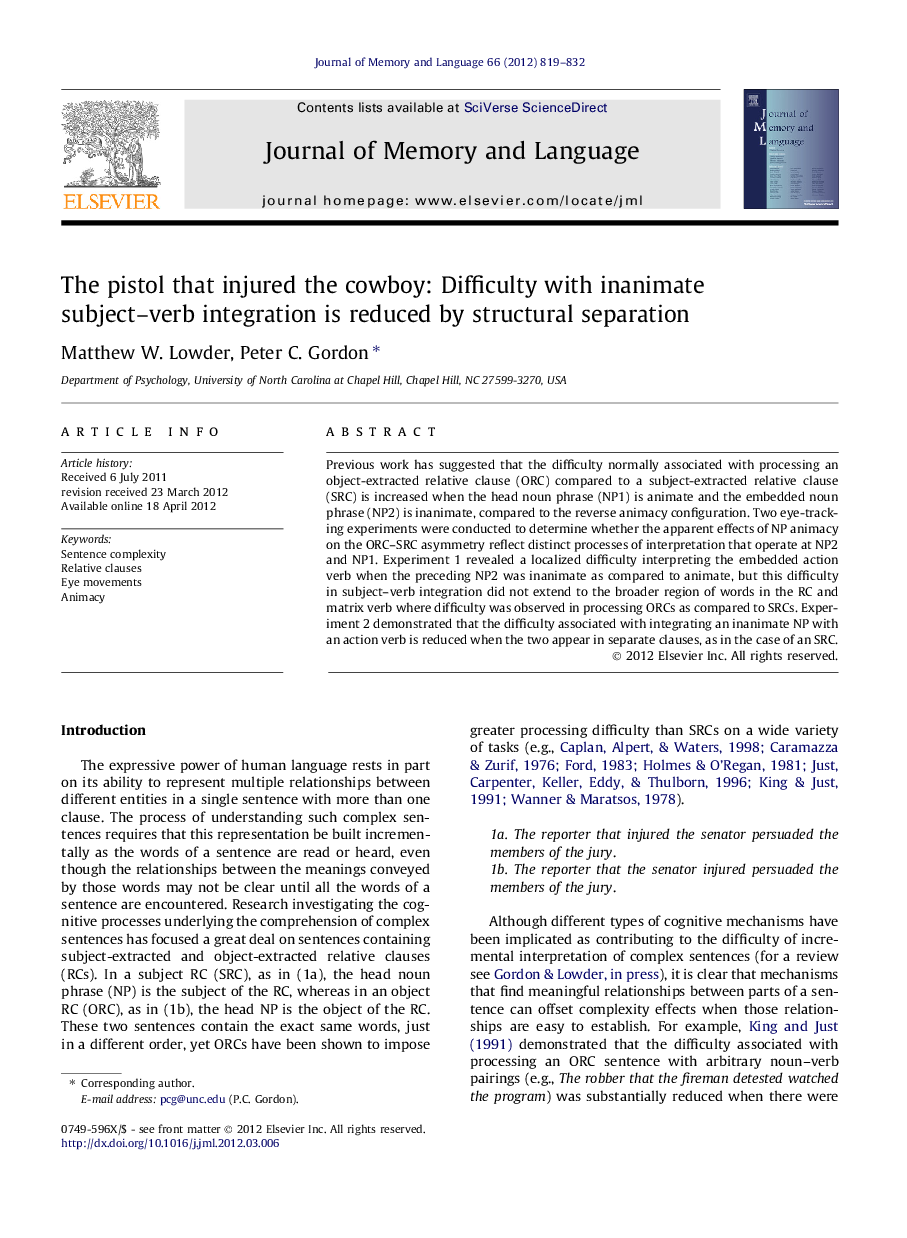| Article ID | Journal | Published Year | Pages | File Type |
|---|---|---|---|---|
| 931949 | Journal of Memory and Language | 2012 | 14 Pages |
Previous work has suggested that the difficulty normally associated with processing an object-extracted relative clause (ORC) compared to a subject-extracted relative clause (SRC) is increased when the head noun phrase (NP1) is animate and the embedded noun phrase (NP2) is inanimate, compared to the reverse animacy configuration. Two eye-tracking experiments were conducted to determine whether the apparent effects of NP animacy on the ORC–SRC asymmetry reflect distinct processes of interpretation that operate at NP2 and NP1. Experiment 1 revealed a localized difficulty interpreting the embedded action verb when the preceding NP2 was inanimate as compared to animate, but this difficulty in subject–verb integration did not extend to the broader region of words in the RC and matrix verb where difficulty was observed in processing ORCs as compared to SRCs. Experiment 2 demonstrated that the difficulty associated with integrating an inanimate NP with an action verb is reduced when the two appear in separate clauses, as in the case of an SRC.
► We investigated the integration of an animate versus inanimate sentence subject with an action verb. ► We found greater processing difficulty for inanimate versus animate subject–verb integration. ► This difficulty did not contribute to difficulty associated with higher-level syntactic processing. ► Difficulty was reduced when the subject and verb appeared in two separate clauses.
